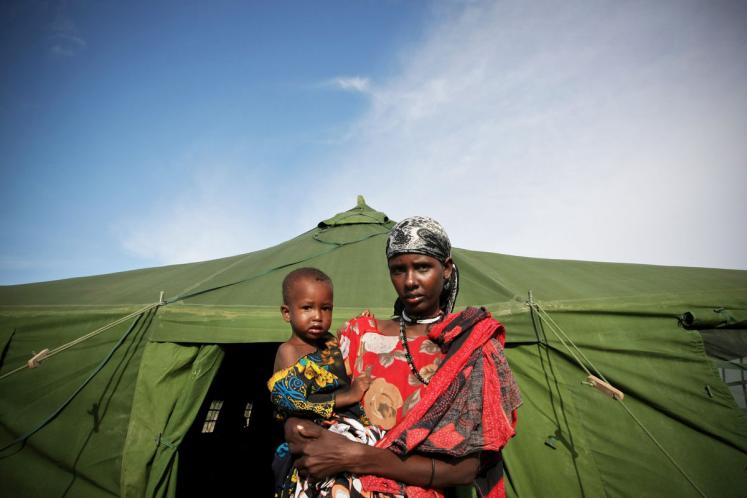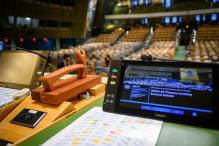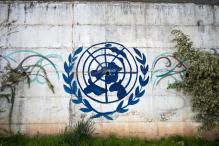We have argued, earlier, that the humanitarian system is struggling to meet the demands of both slow-onset and sudden-onset crises, and called for new ideas. In response to that challenge, this post describes the gaps between current humanitarian planning processes and reality, identifies two core principles for response to slow-onset crises, and proposes a rethink of the humanitarian appeals process.
Simply put, the pressure to keep producing humanitarian appeals year after year for the same crisis looks ridiculous in the face of persistent under-funding. It does real damage to the credibility of the humanitarian system and the ability of nations to cooperate with aid actors around realistic plans. It also fails to solve some of the most fundamental and well-known problems of these settings: rapid scale-ups followed by pressure to cut back, the porous border between “humanitarian” and other needs, and the lack of any objective way to determine which vulnerabilities are more critical than others outside of famines and epidemics.
Humanitarians, development specialists, and peacebuilding experts need to emerge from their silos and reject a system that encourages separate plans for inter-connected problems. It’s past time for donors and aid actors to start working together in a more logical and honest way – to synchronize planning and budgeting, develop new collective financing strategies and unite organizational mandates in one multi-layered plan.
I: The False Hope of Appeals
As noted in “It’s broke, so fix it”, 90% of humanitarian appeals continue for more than three years, 60% for more than eight years, and four countries have appealed every year since 1992: the Democratic Republic of the Congo (47% funded in 2014), Sudan (55% in 2014), Afghanistan (69%), and Somalia (49%).
Appeals such as these are intended to bring some order to a chaotic situation. A humanitarian appeal is supposed to identify top priorities under time pressure, and ensure that these are met. Ideally, it functions as a triage process that makes the difficult decisions about what is most urgent – education or water, this camp or this group of migrant herders – all in the face of limited resources.
But as appeals have grown in dollar value and stretched over many years, practice has drifted far from theory. Today, donors and implementing organizations seem locked in a self-defeating system where appeal budgeting is chronically detached from resourcing and humanitarian plans remain too distant from other interventions that could support resilience, development, and security.
The fact that appeals will never be entirely met is well known. Agencies know it, governments know it, and communities tend to find out soon after the first appeal on their behalf has been issued. As the graph below illustrates, there is a consistent gap between requests and funding, and a slight downward trend in the funded percentage of appeals.
The repeated disconnect between planning and resourcing is accepted as a cost of doing business. In fact, the notion of basing humanitarian appeals on anything other than pure “needs” is an anathema to many humanitarians, including donors. But insufficient thought is given to the ramifications of such a rigid process in chronic, complex crises. In these settings, issuing annual, repetitive, and humanitarian-only appeals:
-
Forces programming into an annual cycle that is inappropriate to meet many needs.
-
Drains trust out of relationships with local actors.
-
Consumes the resources and manpower of organizations through exhaustive processes to develop the appeals and report on the last year, repeated every six months.
-
Spurs bickering about which interventions deserve the humanitarian “gold seal” and which should seek funding through alternative, slower sources (or just fade away).
-
Diminishes the perceived value of funds reaching countries – always falling short of hopes.
-
Prevents the best use of these funds by encouraging gladiatorial and unrealistic planning.
In short, they provide false hope.
Why are appeals under-funded? Donors understandably argue that humanitarian appeals are too large, that funding cannot continue indefinitely, and cannot simply grow every year. So they call for more realistic planning and greater efficiency.
But the evidence shows that these calls have not changed appeals. Iraq’s appeal increased from $500 million to $650 million between 2008-2009 while proportional funding fell; Lebanon’s 2015-16 appeal four years into the Syria crisis was $2.2 billion despite 2014’s $1 billion appeal being only 47% funded the year before. There are countless other examples.
The logic appears to be as follows: aid agencies discount their appeals from the outset and assume they will receive 60% to 70% of what they ask. As a result, they have little incentive to seek small efficiencies in large budgets, or engage in strategic prioritization – but rather hurl as much as possible at the wall in the hope it will stick. A quick look at any of the appeals, at the project level, shows the truth of this.
And as crises linger and cost-cutting becomes an issue, organizations preparing “needs-based” humanitarian appeals are being forced to play word-games with impossible decisions. Which projects are more ‘humanitarian’ than others? Vulnerable children out of school, families eating one cooked meal per day, single mothers living in squalid camps, unregistered refugees facing deportation – which of these groups deserve what share of precious humanitarian money? And how should the rest compete for the remnants? No valid, quantitative system exists to assess the relative urgency of these needs. The priorities reaching donor desks are supposed to be “evidence-based” – but all too often are just a result of desperate haggling and arbitrary decisions.
The international community can do better. And communities in need certainly deserve better. They do not make a distinction between annualised humanitarian-funded projects, and longer-term development assistance. They look for assistance – and more often then not, assistance that helps them to help themselves. We need a more honest, comprehensive contract between aid agencies and governments, centered around the needs of the people they serve.
II: A Fix for the Wrong Problems
Sudden-onset crises – usually natural disasters – have a clear beginning and a relatively predictable, limited arc. Slow onset crises – usually man-made disasters such as wars or famines – do not. Every significant slow-onset crisis for the past decade – Iraq, Syria, Yemen, Ukraine, the Sahel, and the Horn of Africa famine – had been on political and media radars for months – sometimes years – before a major response was launched.
In these types of cases, by the time humanitarian organizations are ready and funding has arrived, the gap between response and need has widened too far to be closed. In fact, no humanitarian appeal could come close to a fully implemented response in a slow onset crisis for two simple reasons: (i) needs grow in scale and complexity too fast; and (ii) a humanitarian response alone is the wrong answer.
A. The High Pressure/Slow-Puncture Effect
The intense demand for rapidly-scaled responses after a crisis has attracted international attention and funding, creates problems. Organizations scramble to build their reach, with a profound impact on fragile local markets, institutions and labour forces. The best of intentions underlie such urgency – needs must be met and suffering alleviated. But at some point, a chronic crisis will outlast donors’ willingness to continue providing funds at these same, stratospheric levels. Accordingly, donors will ask aid organizations to reduce their appeals. Aid agencies will often scale down the extent of their appeals – though continuing to ask for more than they will receive. The code for this is “targeting the most vulnerable”. This is cold reality trumping humanitarian sentiment – because as we have said, in all but the most desperate of settings relative vulnerablilty is not so easy to assess.
The graphs below show a steady decline in funding to multi-year appeals. The percentage funded stays roughly the same, but the actual number of dollars available for projects diminishes consistently after the first year. But in the initial funding frenzy, there is no time to plan for the inevitable, predictable contraction. The ensuing scale-down often creates deep dilemmas. Lives and livelihoods are implicated. Cutbacks act like tiny holes in a tyre: organizations frantically scramble to plug these holes out of solidarity – to protect their staff, partners and beneficiaries.
B. A Disconnected Response
The impact of this “high pressure/slow-puncture” effect undermines what should – alongside the humanitarian imperative – be the core objectives of international assistance in emergencies: the creation of resilience and the construction of long-term national partnerships and confidence in important multi-year essentials like education.
This approach is particularly self-defeating because long-term crises have a non-humanitarian impact from the outset. Development is reversed; political and community relationships are placed under pressure. The longer crises last, the more fallout they produce. And this is why a solely, or perhaps even primarily humanitarian response will always be the wrong answer.
The architecture of the international system has emerged from unplanned growth. Technocrats make technical fixes to improve the architecture, but they all work from within their own structures. Hardly anyone working for example, in UN-OCHA, has prior experience in development organizations.
The humanitarian appeals process is a product of this separation. It engenders an artificially isolated view of humanitarian needs – imagining a world in which “development” or “peacebuilding” actors will parachute in from elsewhere when it is their time.
But on the ground, these distinctions are increasingly meaningless – particularly to the people they are supposed to serve. Today many aid organizations have complex mandates; their teams are expected to cover both humanitarian and recovery needs. Development and security specialists are not parachuting into crises later; they are usually already working in the office next-door.
One could argue that some sudden-onset disasters – a volcanic eruption, for example – might have distinct humanitarian elements with a finite shelf-life. But the human consequences of chronic emergencies often grow over time. Refugee flows continue for decades, acute hunger can worsen over time, family savings can run out, water resources can become more scarce, shelter more precarious.
Syria’s regional crisis has tested the “distinct, needs-based” religion of humanitarian practice to its limit. Unless action is clearly saving a life, it is not quite so easy to weigh its value relative to other actions also aimed at alleviating misery. It is even harder to untangle which needs spring directly from the crisis and which have a deeper history.
If humanitarian problems don’t exist in isolation, neither should solutions. Indeed, very few people who are recipients of international assistance, and who should guide and shape this assistance, can articulate a difference. A humanitarian response plan for complex, long-duration crises should sit within a package of thinking: immediate relief as part of a broader plan to reinforce services, stability and resilience. One plan could do this job, not three or four.
And yet some countries are unfortunate enough to be saddled with a humanitarian appeal, an Integrated Strategic Framework (tagged to Security Council Resolutions), and a United Nations Development Assistance Framework all running in parallel – a nightmare of reporting and transaction costs.
III: A Unified Planning and Appeals Process
In 2013, governments spent record amounts on humanitarian action – $22 billion dollars. $8.3 billion of this was raised through the appeal system – $5 billion less than asked, but still a significant amount. Appeal funds were to relieve acute suffering for nearly 80 million people; over a third of the money was for one single complex, long-duration crisis (Syria). Figures for 2014 and 2015 will likely be even more striking, as Syria’s crisis rolls on.
With such high stakes at play – financial and human – an overhaul of the system should be an obvious priority. We need a planning and appeals system that can deliver in short-term emergencies as well as for chronic, complex situations like Syria. The following ideas could provide a starting point.
Appeals with sunset clauses: Coordinated “humanitarian” appeals should be limited to one “Rapid Response” appeal to fund the scale-up of activities. The plan would expire in 12-18 months and should be funded through quick-release mechanisms – ideally within a maximum of three months from the date of the appeal. To achieve this, a “Rapid Response” fund could be developed under the auspices of the G8, G20, or the existing CERF mechanism replenished and used to fill gaps.
Planning ahead: Within 12 months, every crisis likely to outlast the Rapid Response horizon should be required to move to a multi-year Crisis & Resilience Plan in three tiers:
-
Programmes to be reviewed for scale after a year (to include big-ticket items like food distribution, hygiene kits, and cash assistance outside of social security programmes).
-
Programmes likely to continue for 2-3 years (such as education, livelihoods, and peace-building initiatives).
-
Programmes likely to span a whole 5 year development cycle (institutional reform).
Crisis & Resilience Plans should also:
-
Be a compact between governments and agencies, not a traditional appeal. They should, in addition:
-
Define principles of the approach.
-
Outline a timeline to convert non-sustainable initiatives to sustainable ones (key to minimizing the impact of scale-down) – or else set the criteria and options for phasing them out.
-
Price a minimum set of actions; these could be elaborated as necessary on a sliding scale: what could be achieved with 20% more funding, what with 50%, etc.
-
Incorporate innovation and new technologies such as SMS-based monitoring and reporting systems, still under-utilized in complex emergencies but with huge potential benefits – some which can be realized quickly; most of will require a year or more of work.
-
-
Be the only active plan in-country for a 3-5 year horizon (except for pre-existing government plans). Exact timeframes could be fixed depending on nuances of the situation. By definition, the plan would invest in overlaps between humanitarian, development, and peacebuilding work-limiting transaction costs for beleaguered staff and creating a much more realistic set of expectations. Annual updating of the Crisis and Resilience Plan should use existing levels as a baseline while aiming for some revenue growth (10-20%). Advocacy for funding should not be affected. The current appeals system conflates planning with advocacy in an unhelpful way. Planning should always be based in reality, even if advocacy can aim for ideals.
-
Focus on cooperation around linkages and results, rather than around sectors and “agencies of last resort”. This might and should eventually have wider implications for global humanitarian structures (for example, the Inter-Agency Standing Committee cluster system has debatable merits for complex crises). Some countries have already tried variations on the theme of tiered, multi-year planning (DRC and Somalia are two notable examples). Such innovations should not have to wrestle with a hardened global funding formula.
Synchronizing the planning-pledging timeline: Donor coherence – currently one of the weakest parts of the humanitarian enterprise – is key to reform. Unconstrained planning is simply not planning; successful organizations plan with a realistic budget in mind. The aid community should be able do the same. Three key steps are required:
-
It is long past time for donors to make something tangible out of the Paris Declaration. Too many key donors undermine the coherence they demand through unpredictable, poorly-coordinated, and sometimes capricious funding. Donors must live up to their commitments.
-
Pledging and planning should become more aligned. Pledging conferences held months after appeals are not practical. Planning must be made more realistic. Options include:
-
Developing Crisis & Resilience Plans in sync with donors, allowing fundraising and programme planning to happen simultaneously. Evidence-based targeting should actually be strengthened by budget-conscious planning; the more realistic the plan, the better its chance of working.
-
Developing a modality that allows for a group of donors to set a commitment early in the planning cycle, and to use the CERF (or other pooled funding mechanisms) to guarantee that the commitment will be met. This public number should form a hard constraint on planning.
-
-
Donors and the UN/World Bank system should also strengthen multi-year funding modalities for chronic crises. Many options have already been suggested. Thematic funding pools are a possibility (for crisis education, for example), regional funding pools to be activated per crisis, or a rolling G8 or G20 Conflict and Resilience fund specifically designed for multi-year programmes. Such funding, however, would only work in conjunction with longer-term planning cycles, and clear indicators that require multi-year programming.
Conclusion
The humanitarian appeals process has become so large and all-consuming that it can seem inevitable. It is not. Humanitarian thinking has evolved before, and can again.
These are some ideas to fix a faulty system. Others may be better. But we should hurry to consider them. Every day the humanitarian clock ticks down to a new crisis. It will bring a new set of desperate families, and a new but sadly familiar challenge for our over-strained country workers. We may not be able to solve all of their problems but we surely owe them all our ingenuity.
Suggested citation: Rahul Chandran, Claire Hajaj., "Time for a Reset: Fixing the Faulty Humanitarian Appeals Process," UNU-CPR (blog), 2015-11-10, https://unu.edu/cpr/blog-post/time-reset-fixing-faulty-humanitarian-appeals-process.




